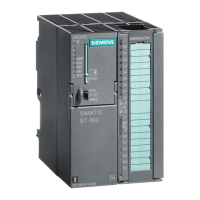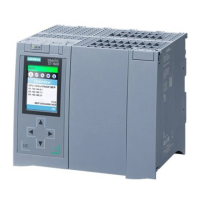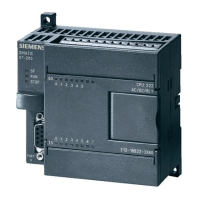Configuring communications connections
5.8 FETCH/WRITE mode
Configuring and commissioning S7 CPs for Industrial Ethernet
Configuration Manual, 09/2013, C79000-G8976-C182-13
113
You can access the following address areas in the system memory on the SIMATIC S7 PLC
using FETCH or WRITE:
● Data blocks (DB)
(for DB access, note the following restriction: the highest DB number is 255)
● Bit memory (M)
● Process input image (I)
● Process output image (Q)
● I/O area inputs (PIW, PID, PIB)
● I/O area outputs (PQW, PQD, PQB)
● Counters (C)
● Timers (T)
The FETCH and WRITE modes supported on ISO transport connections and ISO-on-TCP or
TCP connections can be used with any other device to access the S7 system memory areas.
To be able to use this type of access, for example for PC applications, you need to know the
PDU structure of the jobs. The required S7 or S5 header for request and response frames
are 16 bytes long.
For information on the PDU structure, see Linking to other systems with FETCH/WRITE
(Page 237).
Messages in the diagnostics buffer
As a result of FETCH/WRITE access, negative acknowledgments from the S7 CPU are
possible. This then leads to corresponding connection-oriented entries in the diagnostics
buffer that you can read out with STEP 7 special diagnostics.
Table 5- 6 Message coding in the diagnostics buffer with FETCH/WRITE
H
Object access is not permitted.
H
Invalid address (syntax ID, area, type, bit number)
H
Data type is not consistent.
The object does not exist or the end of the area has been exceeded.
H

